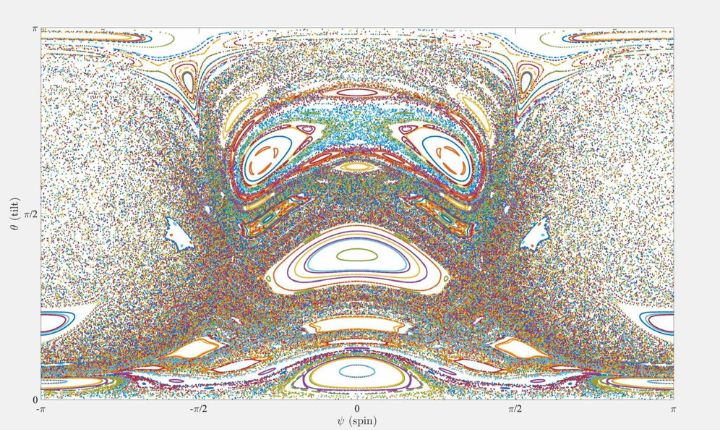Summer Program 2025
Summer Science Symposium
The 2025 Summer Science Symposium was held Friday, July 25, 2025.
- Oral Presentations 8:50am-11:20am, Shanklin 107
- Abigail Lopez and Nadine Stetzelberg (Gonzalez-Pech), Patrick Schechtman-Taylor (Jimenez-Hoyos), Kate DiTullio (Northrop), Julian Frank (Elling), Ada Qin (Adeboye), Vandana Ravi (Melón), Liam Jones (Mitchel), Halcyon Botvinick-Greenhouse (Starr, Mitchel), Casey Gao (Starr), Ethan Chu (Gooyabadi), Jamie Sloves (Barth), Sara Ben Abdallah, Asher Harris, Jacey Henry, and Shalyna Said (Black Box Labs)
- Prize Presentations and Keynote Address 12pm-1:30pm, Exley 150
- Disrupting Drug Discovery Dogma: Rethinking the Aminoglycosides Mechanism of Action,Erika Taylor, Professor of Chemistry and Director of WesMaSS
- Poster Session 1:30pm-3:15pm, Exley Lobby
- 137 posters were presented as part of our annual poster session
Scientific Imaging Prize
Judges Amy MacQueen, Boris Tezak, Sarah Wellons
1st Place, Arjun Menezes
My research this summer has been on the study of sedimentation of chiral geometries, and thus far, it has been on computing the mobility tensors (geometric properties) which govern the movement of these bodies in highly viscous fluid.
This image was generated when we took one of the geometries we have been studying, the helical ribbon, and we introduced the ability for the system to becoming chaotic. Usually, our dynamics depend only on the tilt and the spin of the helical ribbon, but through time-periodic driving of the center of mass (experimentally this could be done with a motor, but this is a simulation in MATLAB) we introduce a third dimension that can lead to chaos.
The image you see is the sedimentation dynamics of the chaotic helical ribbon (I have rotated it 90º counterclockwise to fit best on the page). There are some “regular regions” where the ribbon can oscillate and return to its original position, and large regions of chaotic dynamics.
2nd Place, Brandon Wong
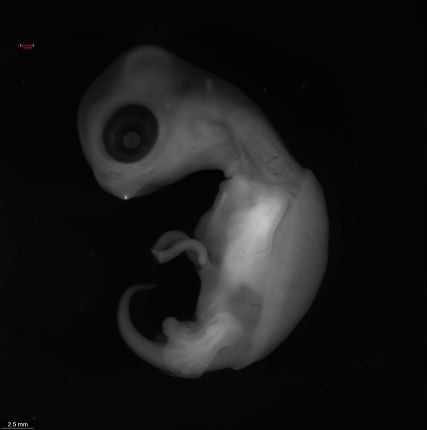
In this image, a turtle embryo is shown during its early developmental stages. Particularly, the shadow of the embryo’s shell, or carapace, and slight digits of its limbs may be visible. I captured this image using the Tezak Lab’s microscope in the standard grayscale format. In the Tezak Lab, we use the Trachemys scripta elegans as our model organism to study how specific incubation temperatures affect sex determination and germ cells. Over the Summer, my project focused on documenting and imaging the full developmental timeline of eggs incubated at intermediate temperatures. Recording the development is crucial, as eggs in nature are not entirely exposed to one extreme climate or the other. With this, these images allowed me to create a graph of several developmental times, which may provide insight into the growth rate, size, and fitness of a turtle hatchling.
3rd Place, Aliya Nurohamed
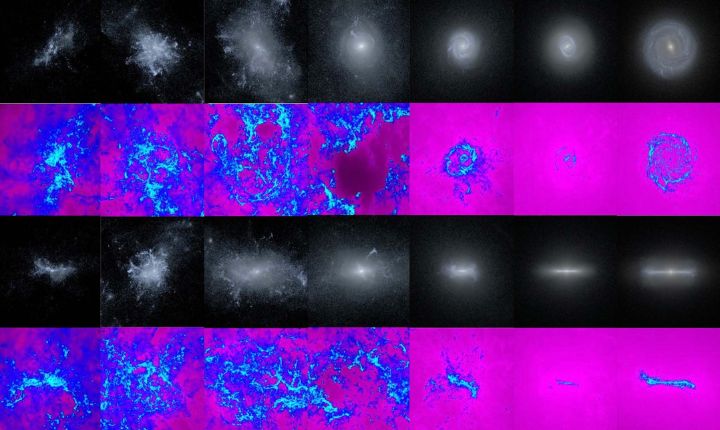
This image shows the distribution of stars (first and third rows) and gas (second and fourth rows) at redshifts 7, 6, 5, 4, 3, 2, and 1—illustrating how the galaxy evolves over time from left to right. The bright blue regions indicate areas of cold, dense gas in which star formation can take place. The first two rows show the galaxy face-on, whereas the bottom two rows show it edge-on to highlight its full morphology.
This visualization is directly relevant to my research, as I am studying how galaxies change in shape (morphology) over time and how they shut down star formation—transitioning from blue gas to pink gas in these images. The simulations I use generate many snapshots like these, effectively creating a “movie” of a galaxy’s evolution. In this particular sequence, we can see that the galaxy continues forming stars throughout its life and eventually develops into a disk with spiral arms.
These images were generated using FIREStudio (Gurvich, A.B., 2022).
Honorable Mentions, Felix Lam and Nadine Stetzelberg
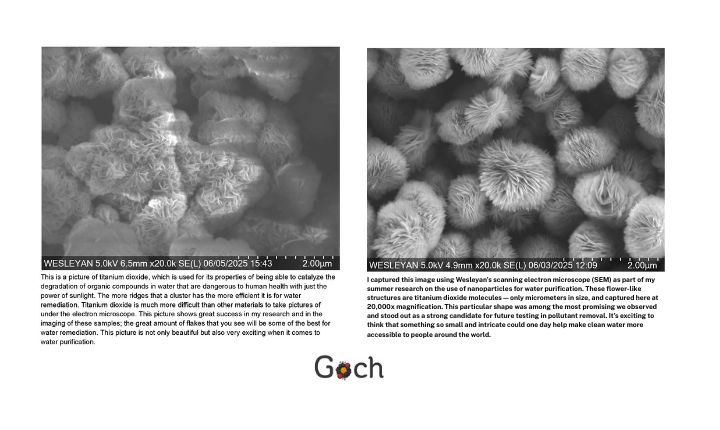
Honorable Mention, Darius Payne
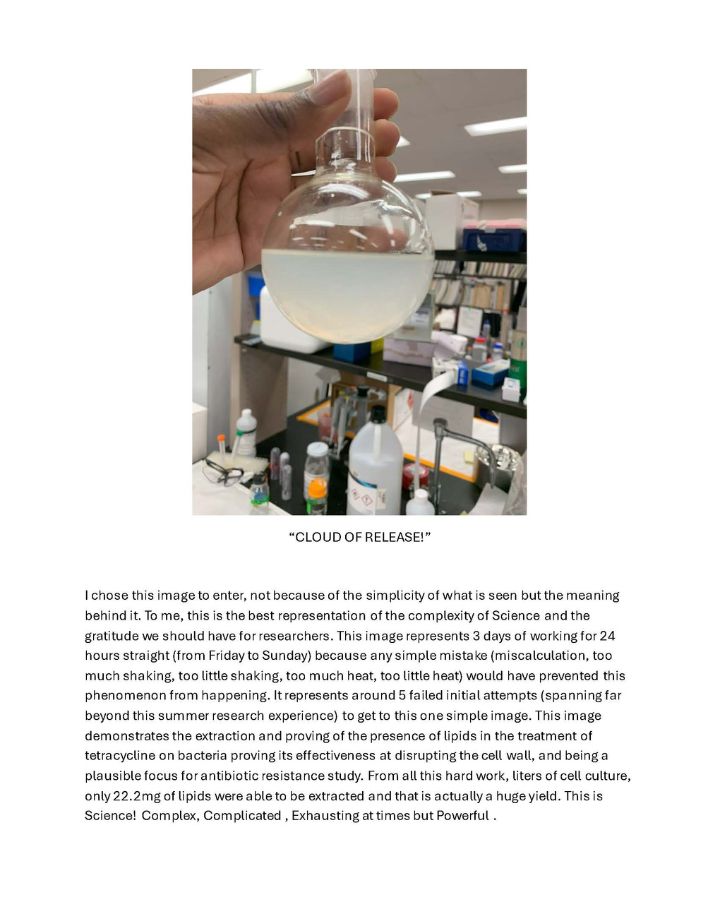
Maureen Snow Poster Prize
for excellence in Science Communication
Judges Stef Dineen, Diane Gaillard, Serena Plage, Mary Readinger, Shana Sperry
1st Place, Arjun Menezes
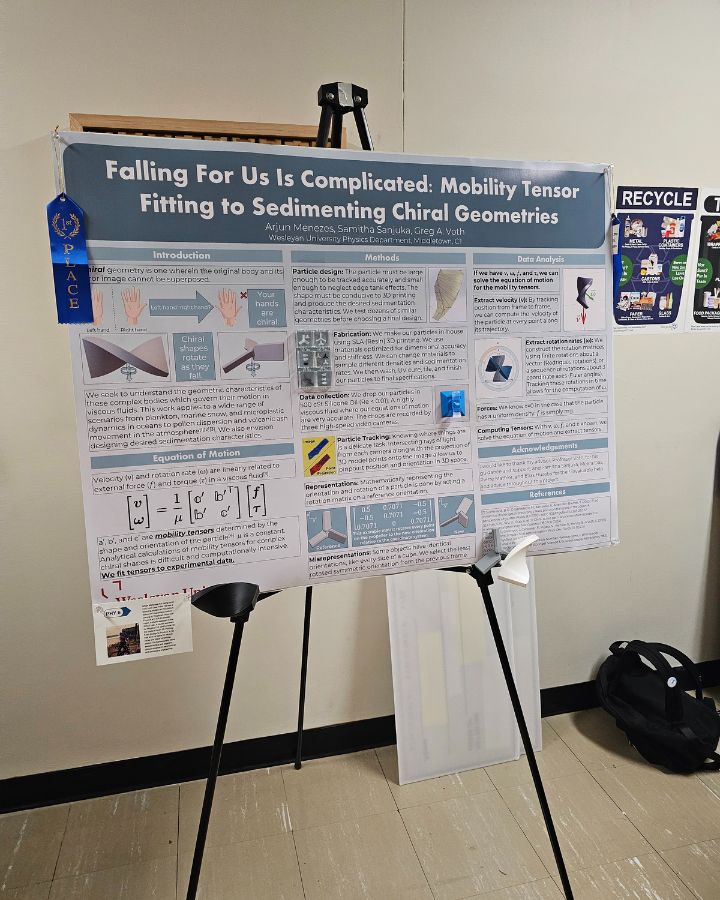
2nd Place, Harmony Lemire and Mariema Tall
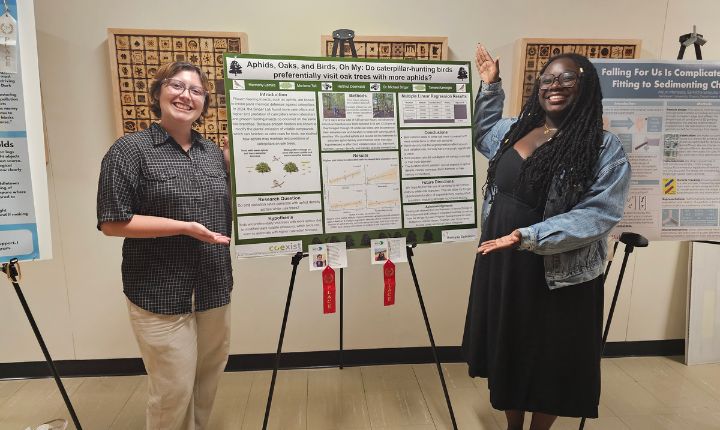
3rd Place, Venus Morroquin
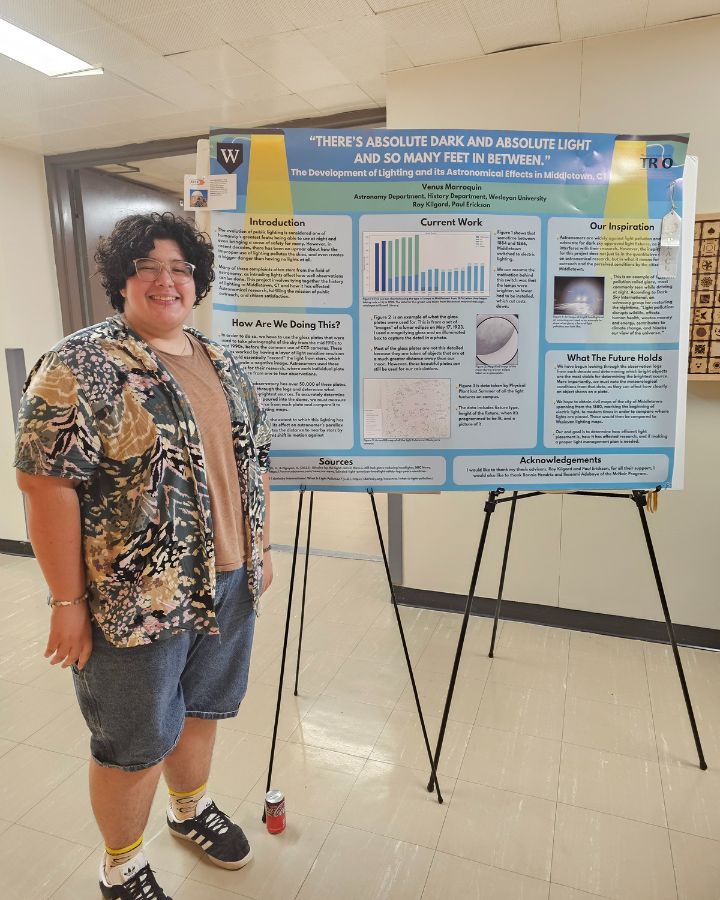
Runner-up, Joely Henry
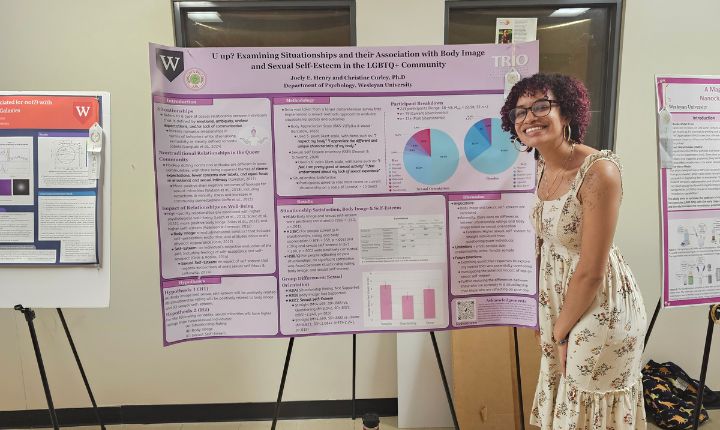
Runner-up, Ella Moses
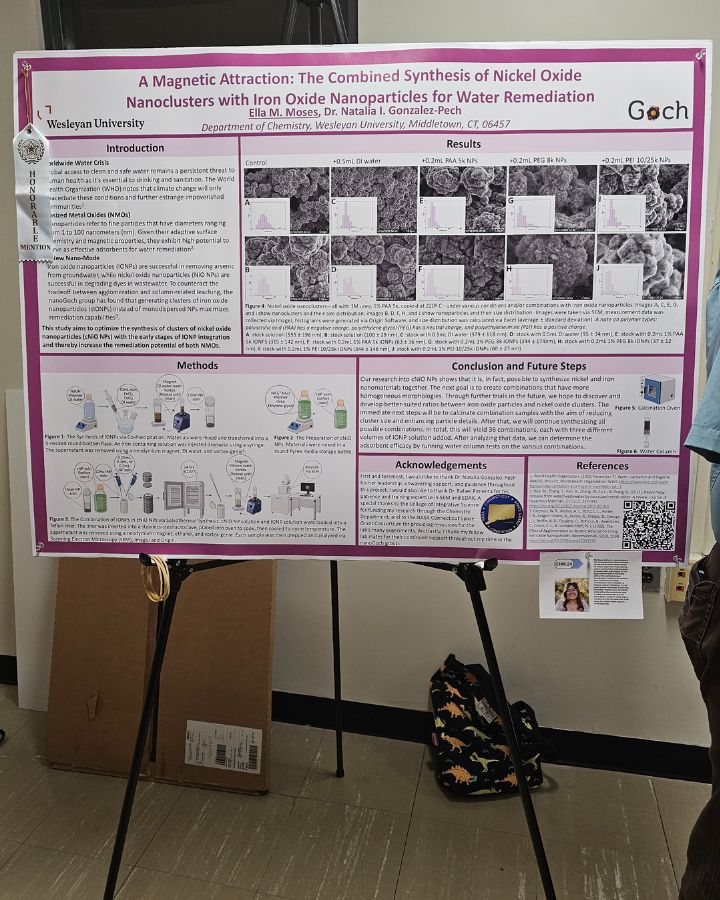
Runner-up, Brandon Wong
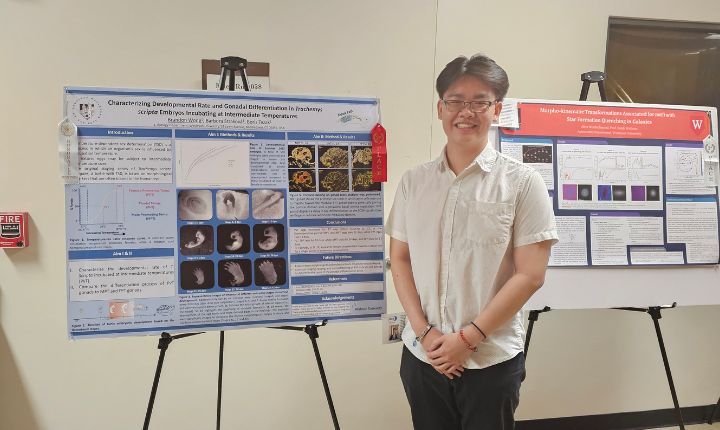
| Mira Bakshi | Adiana Lurvy |
| Halcyon Botvinick-Greenhouse | Abigail Oduro |
| Daphine Kemigisa | Sayed Shafaat Mahmud |
| Alex Kermath | Nirvaan Mehta |
| Zoe Kuhn |
Congratulations to our double first place prize winner!
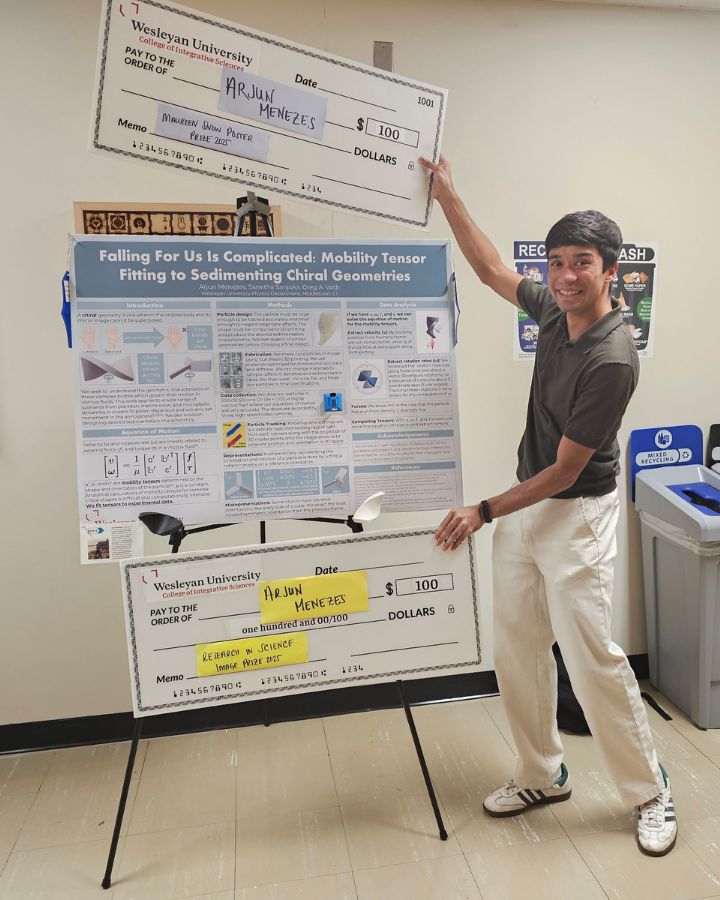
Arjun Menezes '27, Voth lab, Physics
Named Fellowships
- 2025 Siegel Fellow: Zoe Kuhn
- 2025 Sonnenblick Fellow: Patrick Schectman-Taylor
- 2025 Hume Fellows: Vandana Ravi, Brandon Wong
Scenes from the Poster Session

Dane Adams '28, Coolon lab, Biology
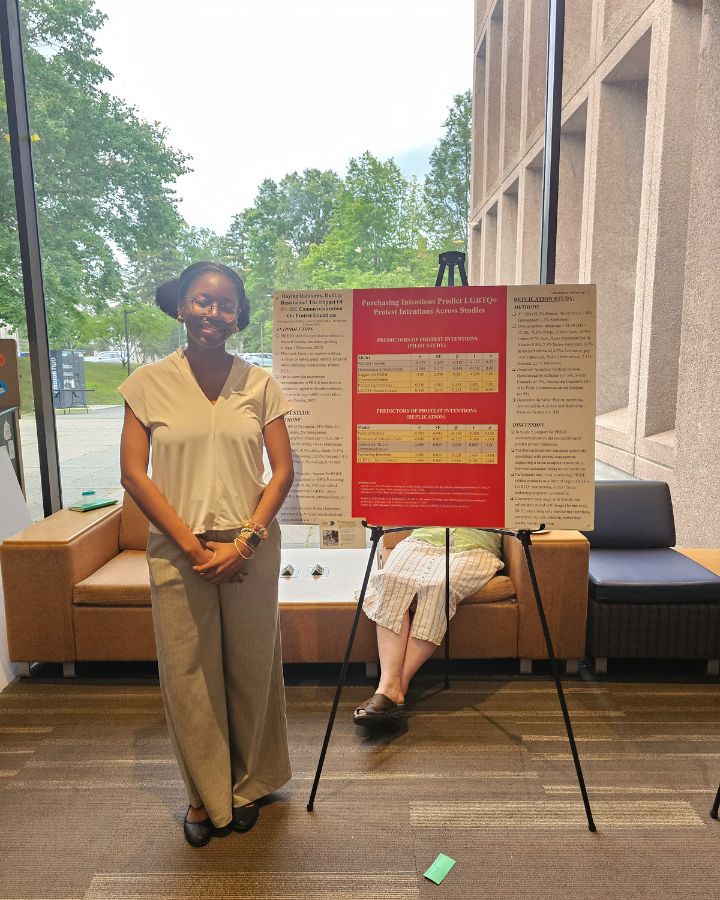
Ama Agyeman Tuffour '26, Perez lab, Psychology
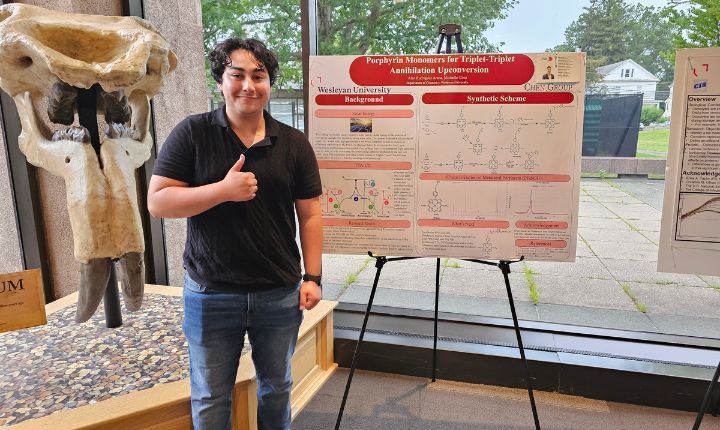
Alan Rodriguez Arana '27, Chem lab, Chemistry
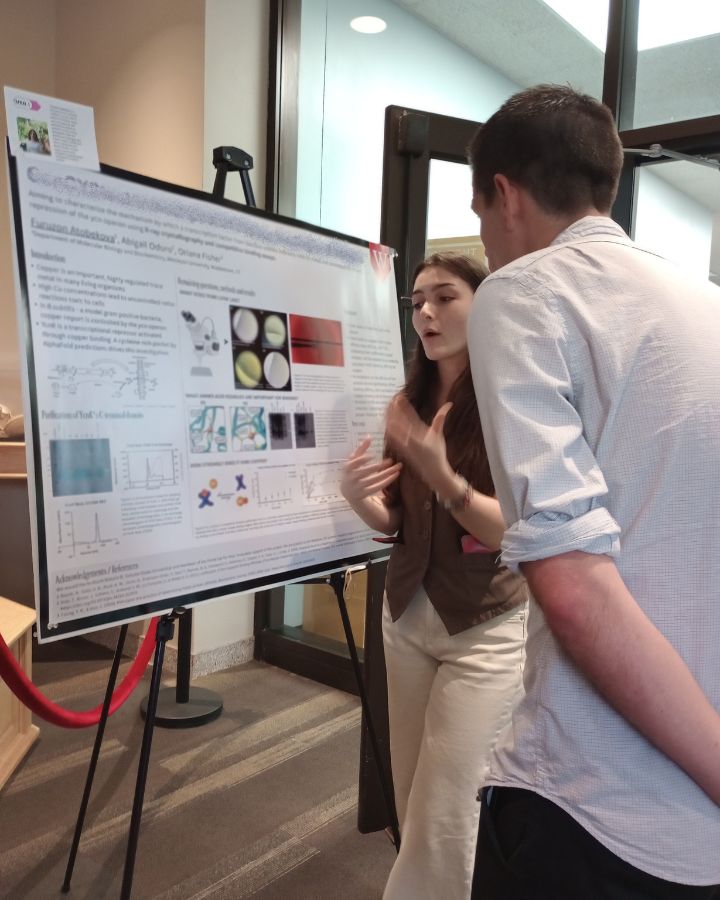
Furuzon Atobekova '27, Fisher lab, Molecular Biology & Biochemistry, with Boris Tezak
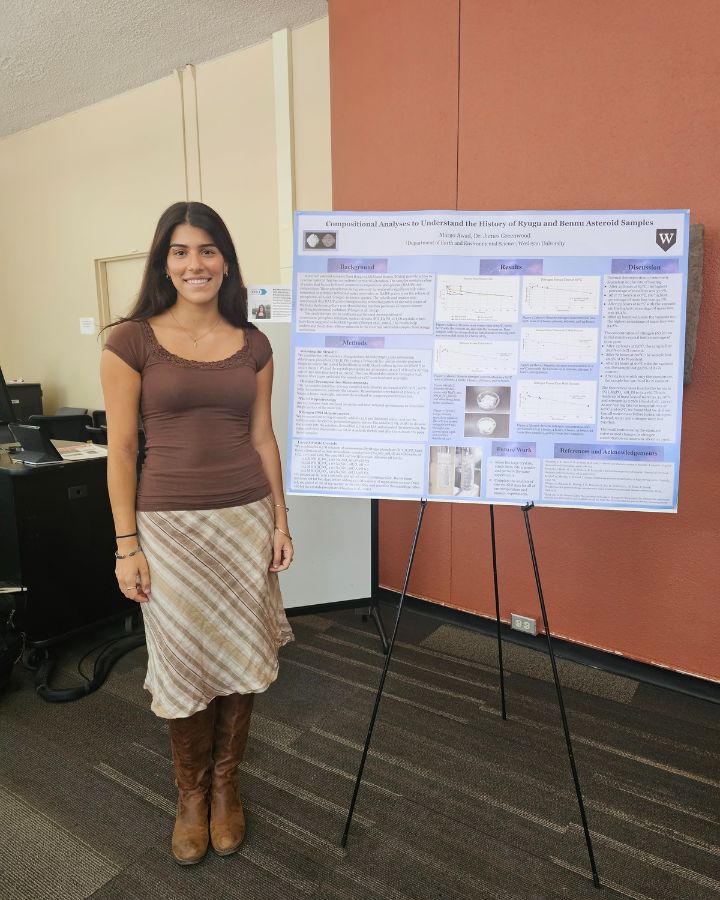
Margo Awad '27, Greenwood lab, Earth and Environmental Science
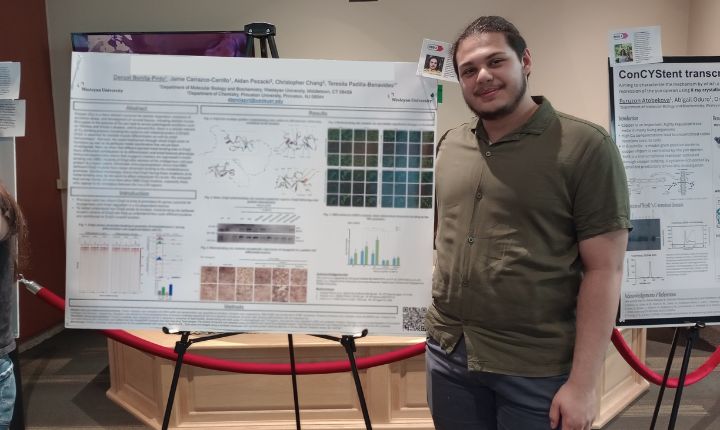
Denzel Bonilla-Pinto '26, Padilla-Benavides lab, Molecular Biology and Biochemistry
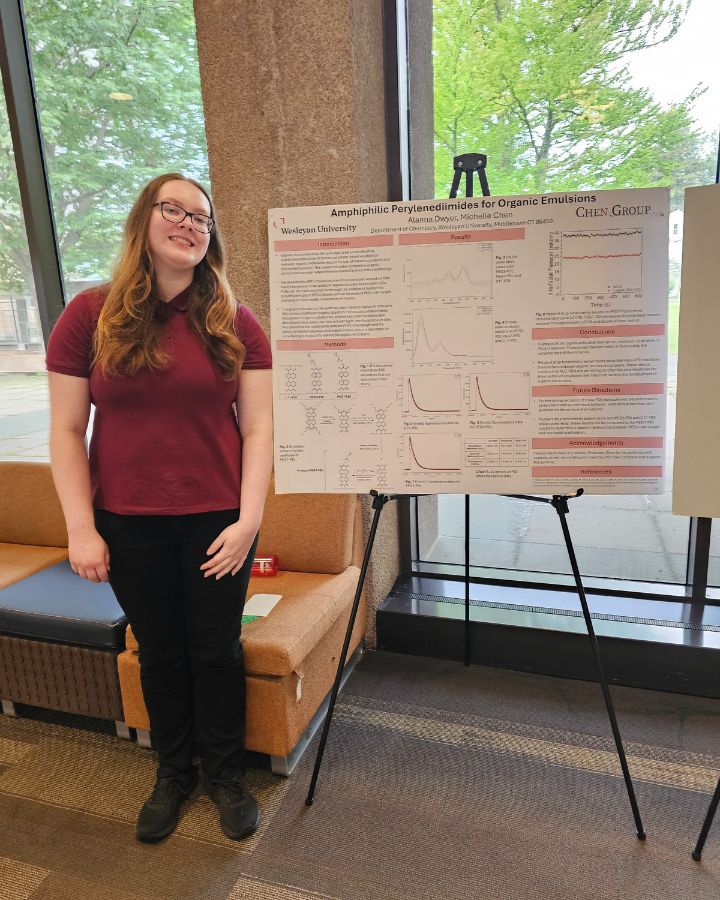
Alanna Dwyer '26, Chem lab, Chemistry
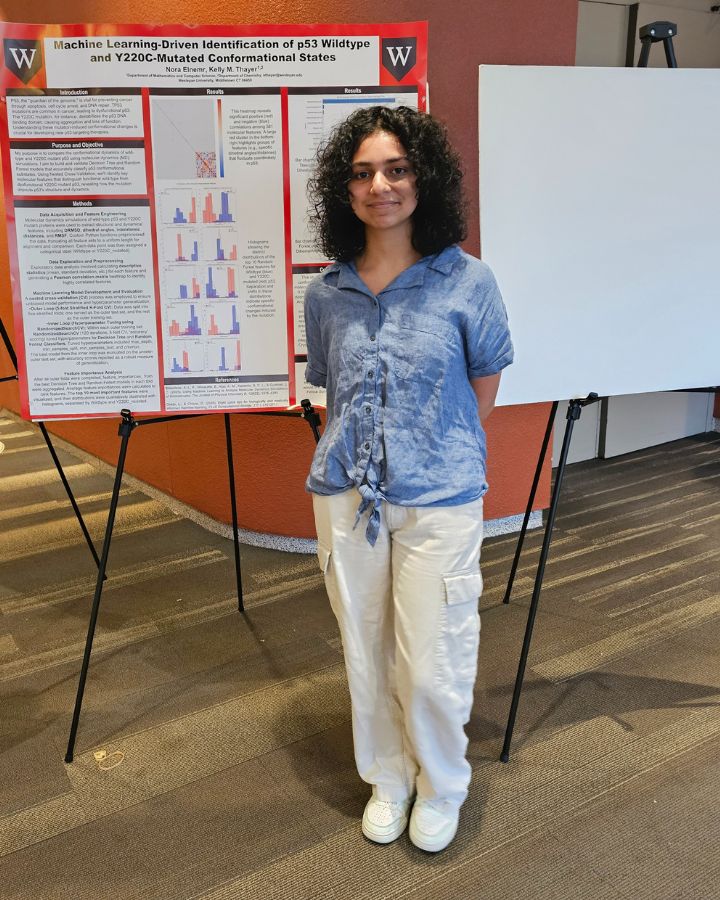
Junior Fellow Nora Elnemr, Thayer lab, College of Integrative Sciences
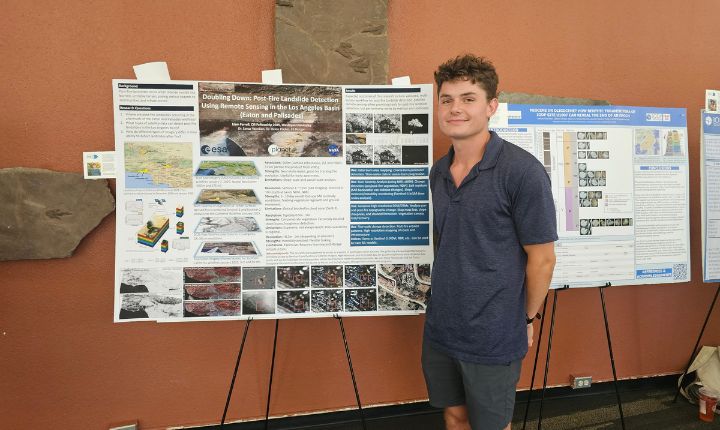
Liam Farrell '26, Vajdean lab, Earth & Environmental Science
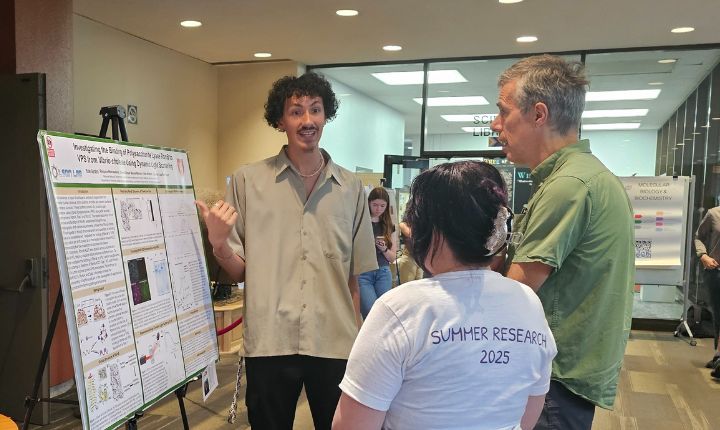
Ryan Gordon '27, Olson lab, Molecular Biology & Biochemostry, with Scott Holmes and Anika Dane
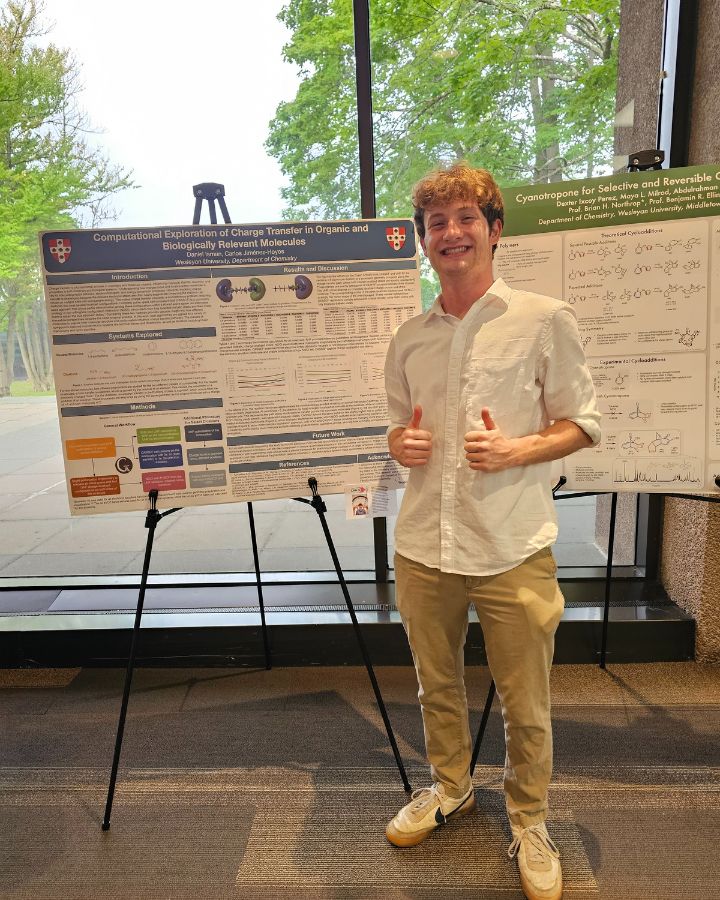
Daniel Isman '26, Jimenz Hoyos lab, Chemistry
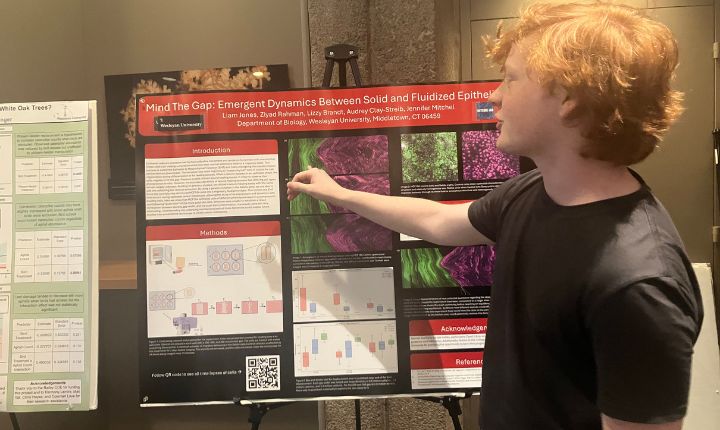
Liam Jones '27, Mitchel lab, Biology
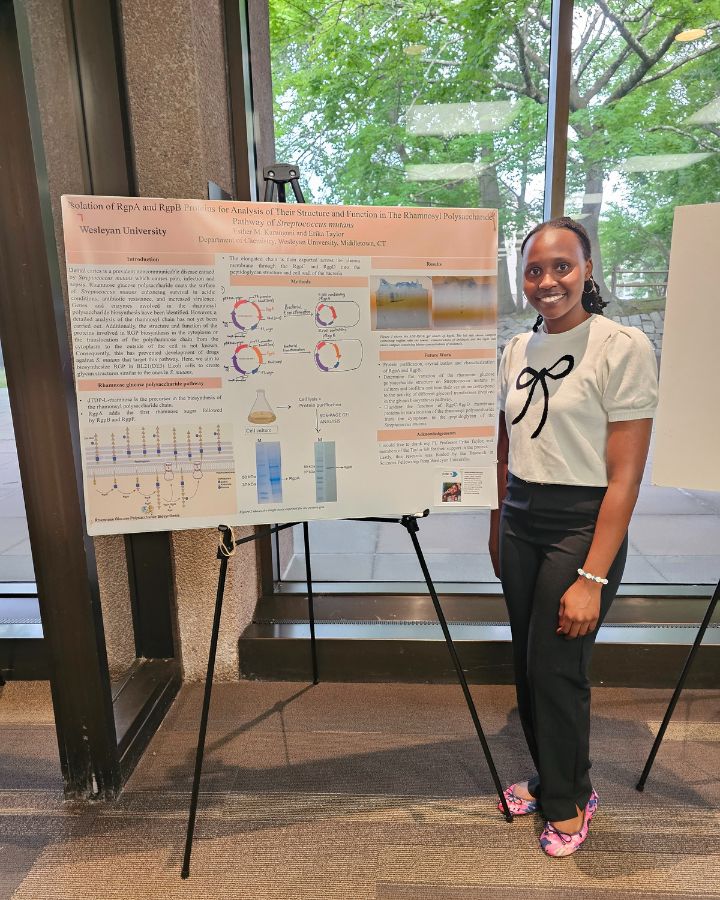
Esther Karungani '28, Taylor lab, Chemistry
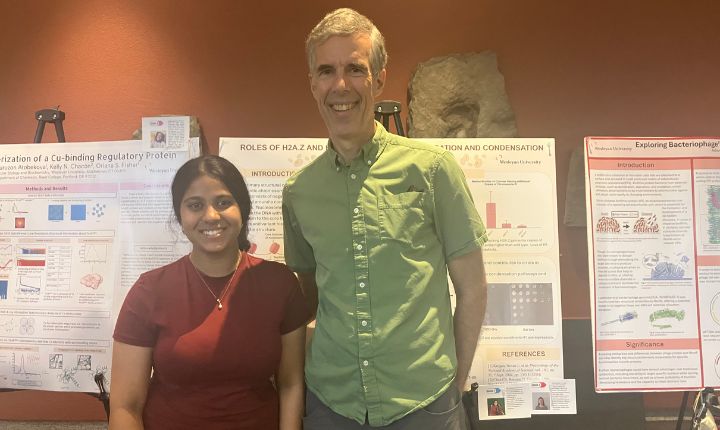
Junior Fellow Srikari Kurada, Holmes lab, Molecular Biology & Biochemistry, with Scott Holmes
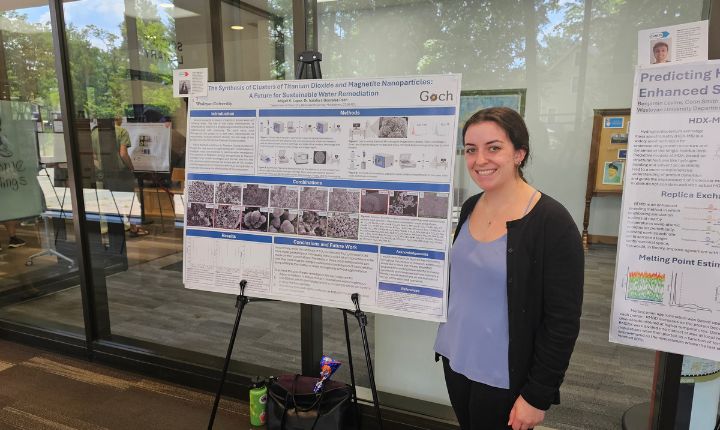
Abigail Lopez '27, Goch lab, Chemistry
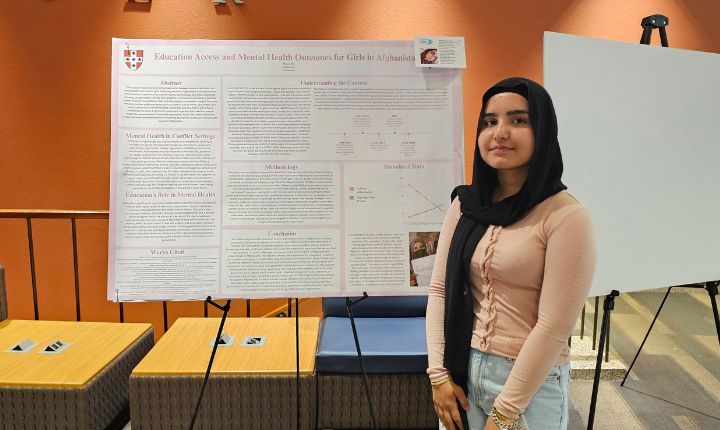
Junior Fellow Marwa Mir, Psychology
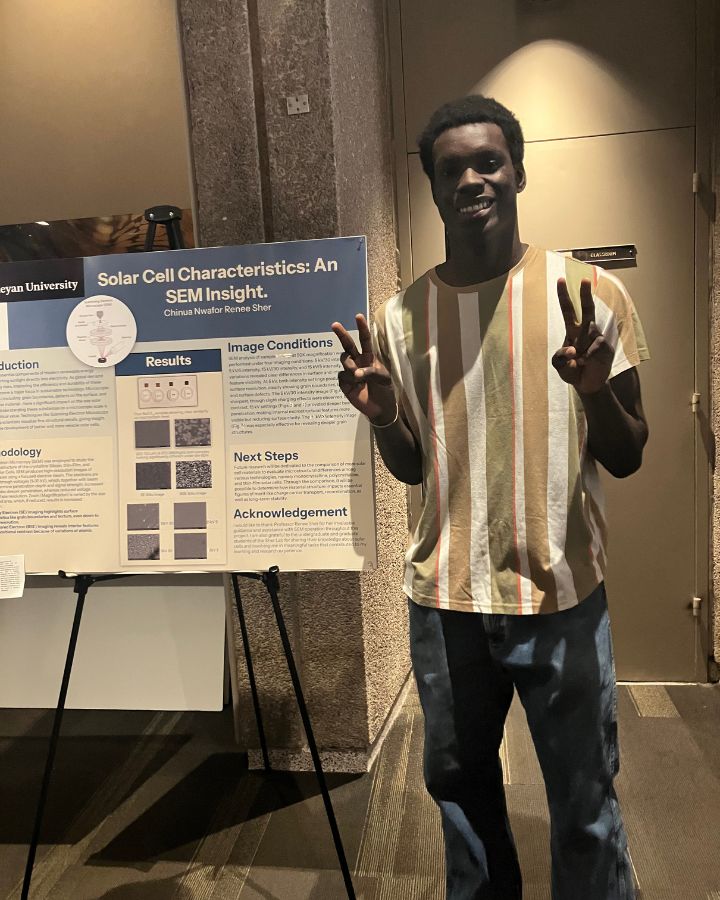
Junior Fellow Chinua Nwafor, Sher lab, Physics
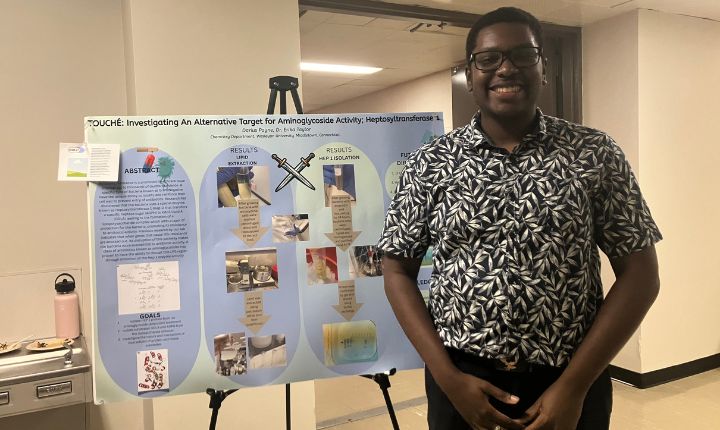
Darius Payne '28, Taylor lab, Chemistry
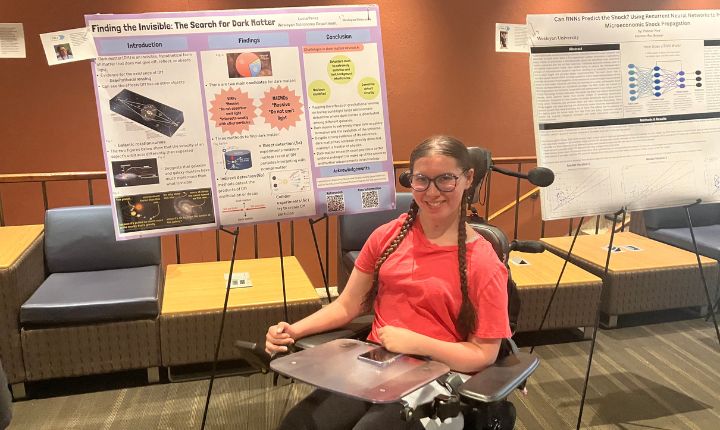
Junior Fellow Lucia Perez, Astronomy
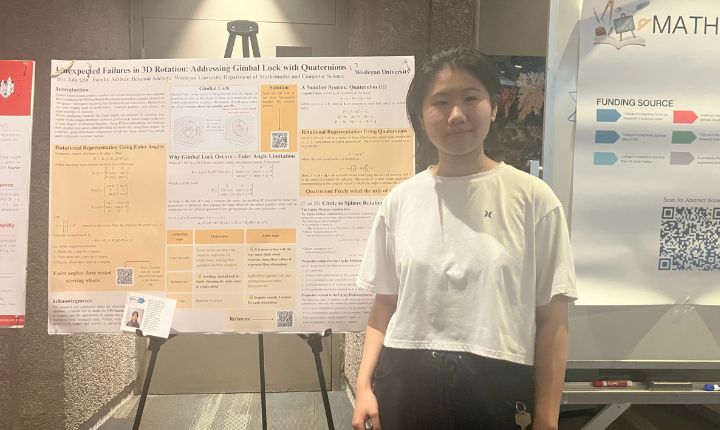
Ada Qin '26, Adeboye lab, Mathematics
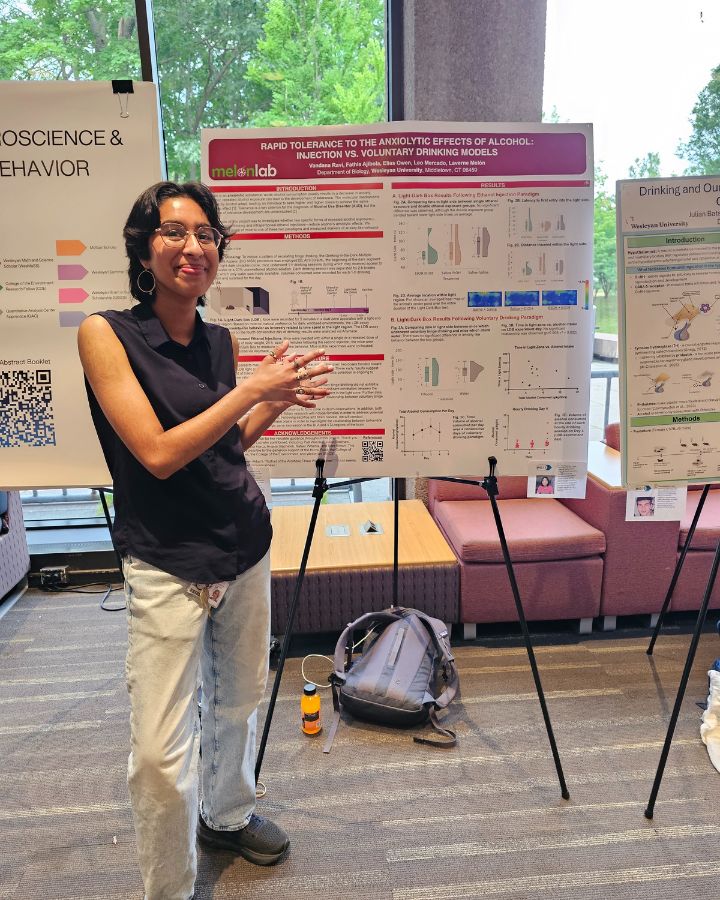
Vandana Ravi '28, Melón lab, Neuroscience and Behavior
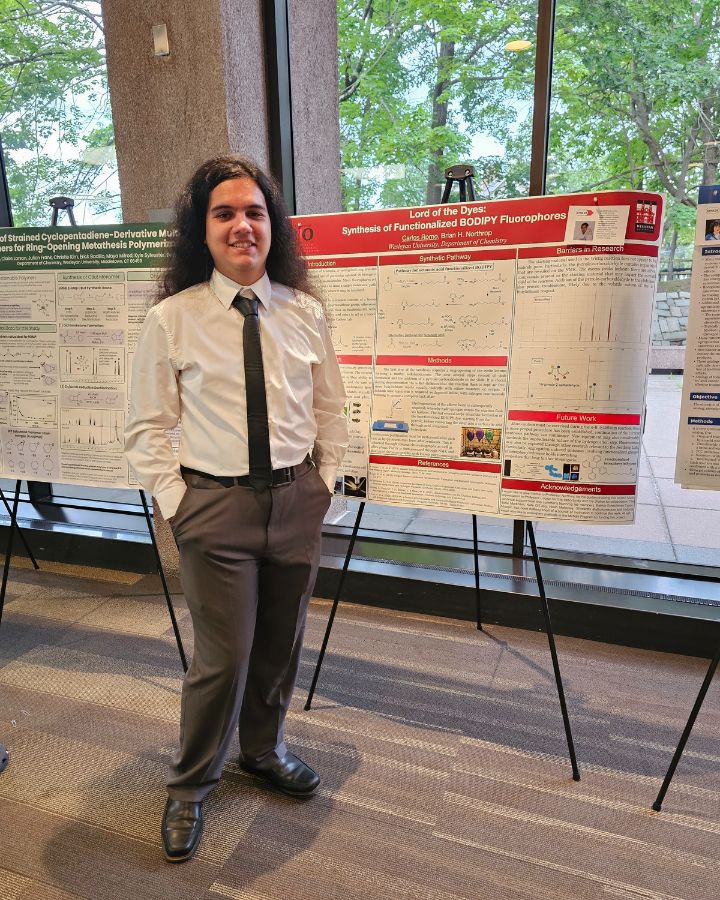
Carlos Romo '26, Northrop lab, Chemistry
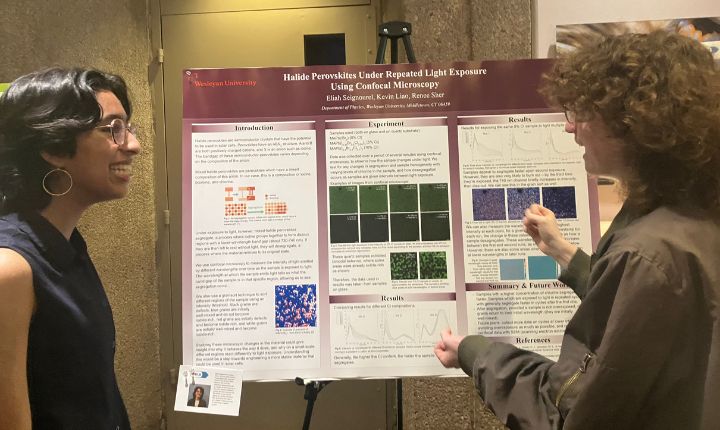
Eliah Seignourel '26, Sher lab, Physics, with Vandana Ravi
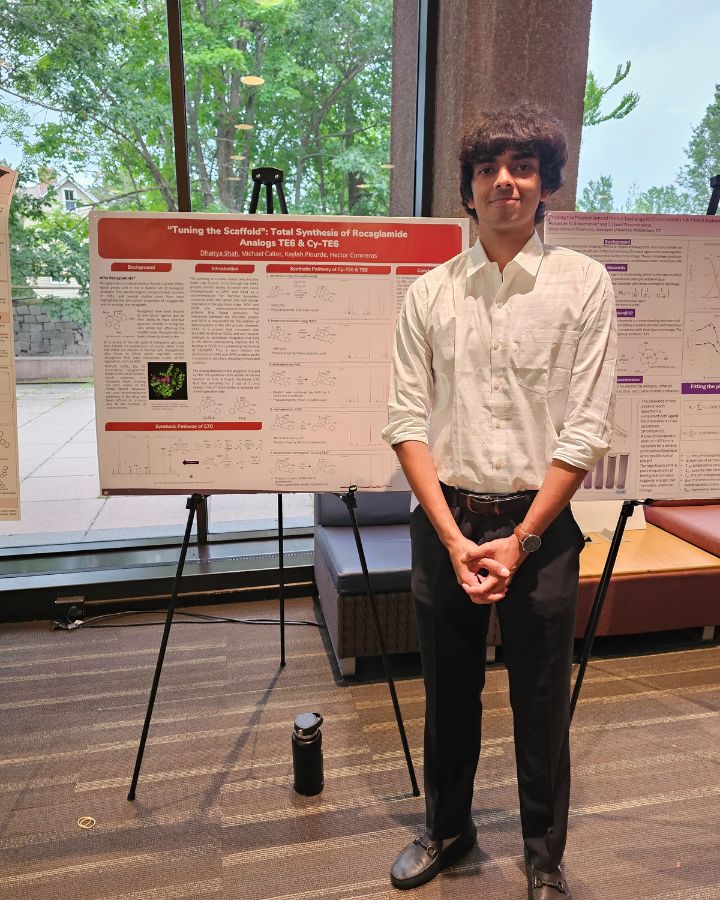
Dhairya Shah '27, Calter lab, Chemistry
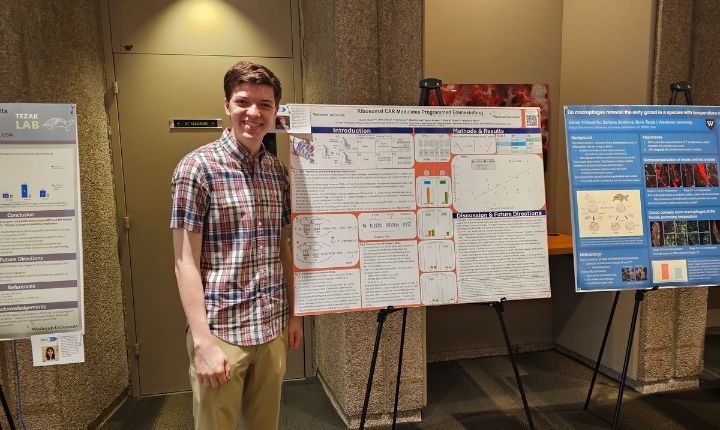
Dalton Soper '26, Weir lab, Biology
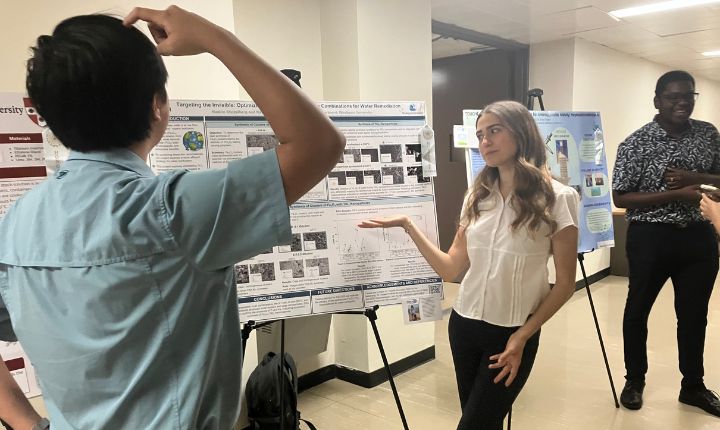
Nadine Stetzelberg '27, Goch lab, Chemistry, with Felix Lam and Darius Payne
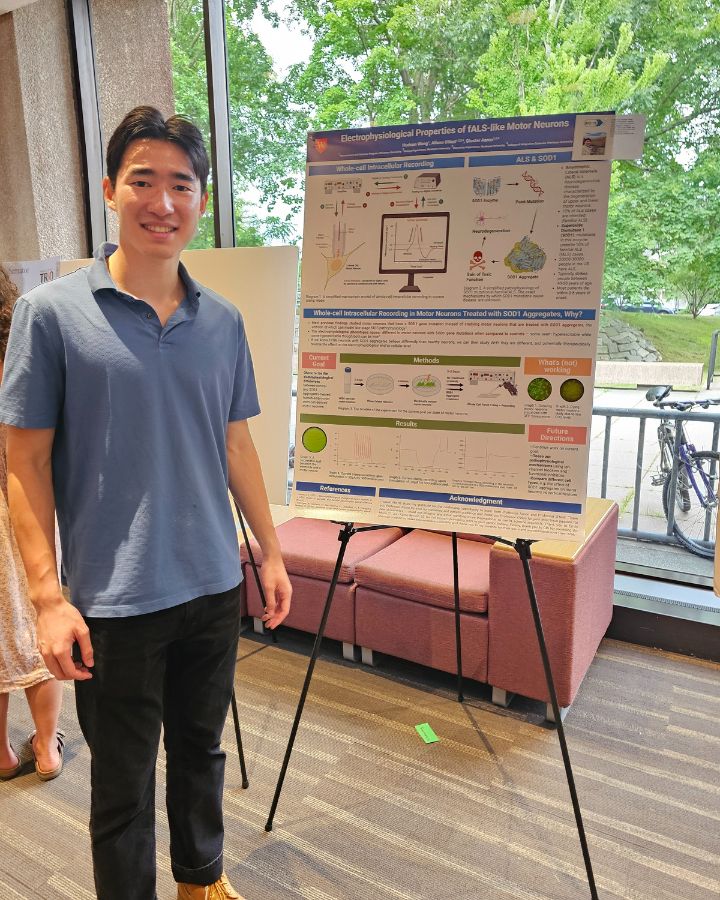
Hudson Wang '26, Aaron lab, Neuroscience & Behavior
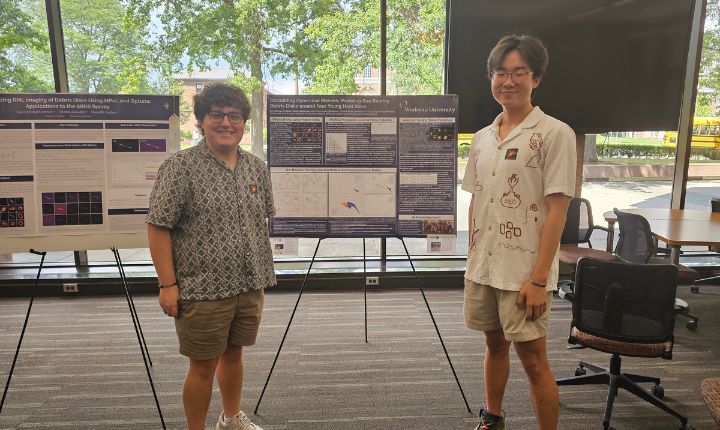
Jamie Weiss '28 and Leo Zhang '28, Hughes lab, Astronomy
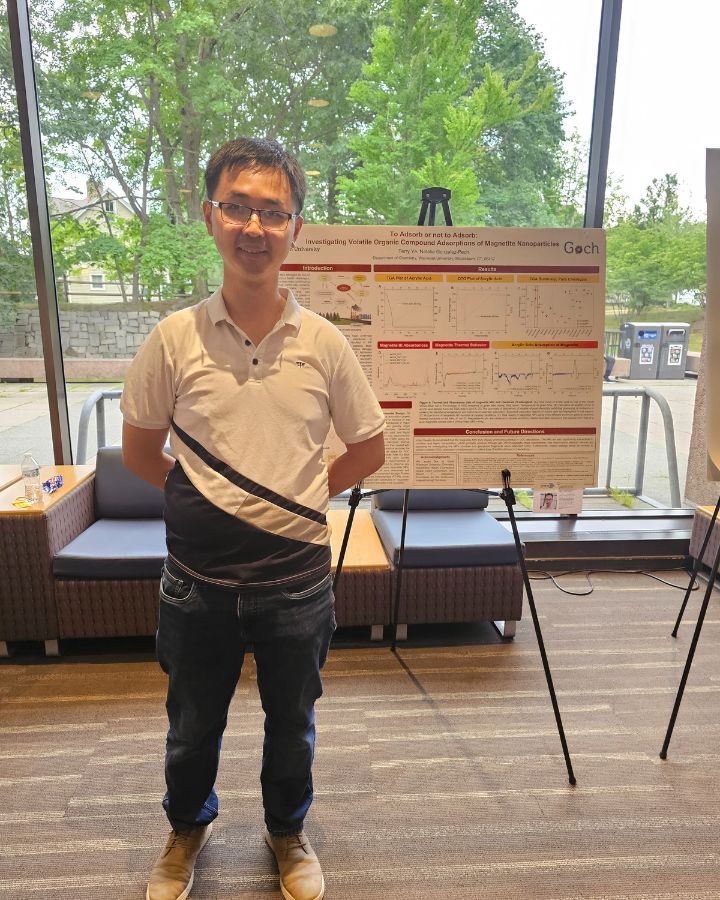
Terry Ye '25, Goch lab, Chemistry
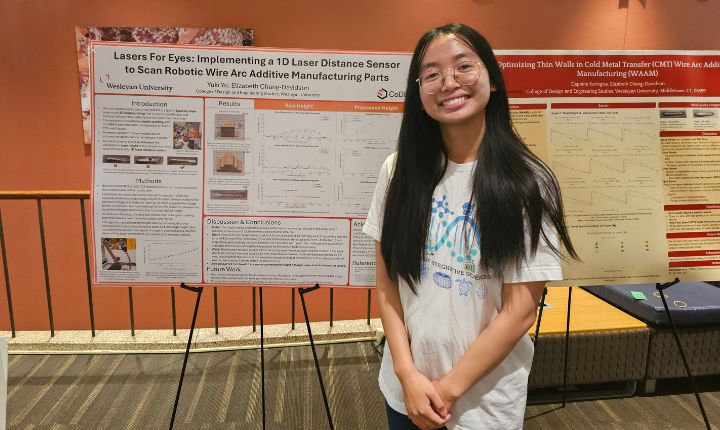
Yuki Yu '28, Chang-Davidson lab, College of Design and Engineering
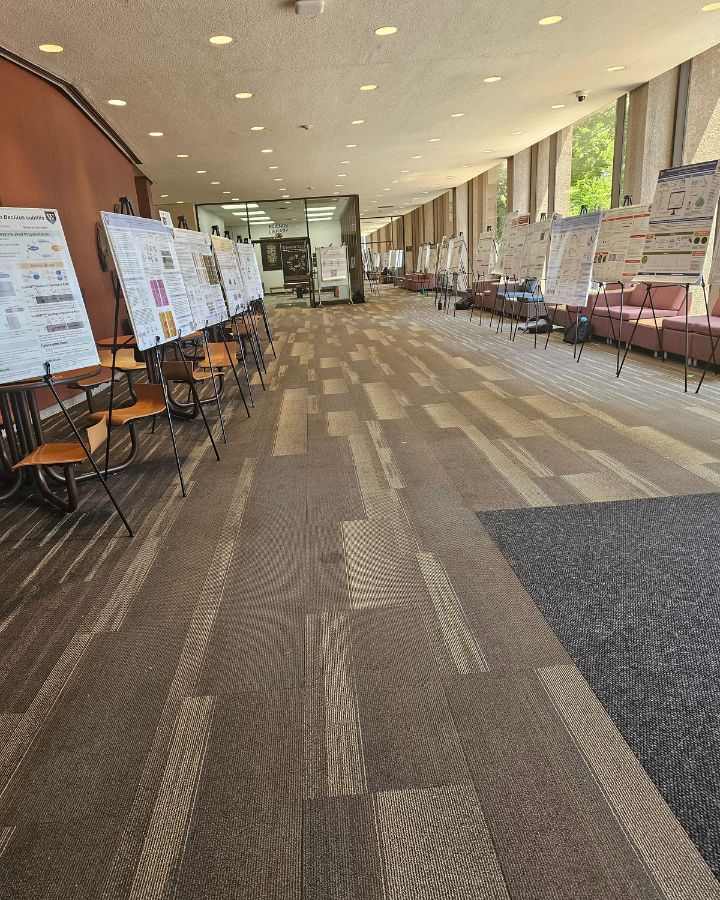

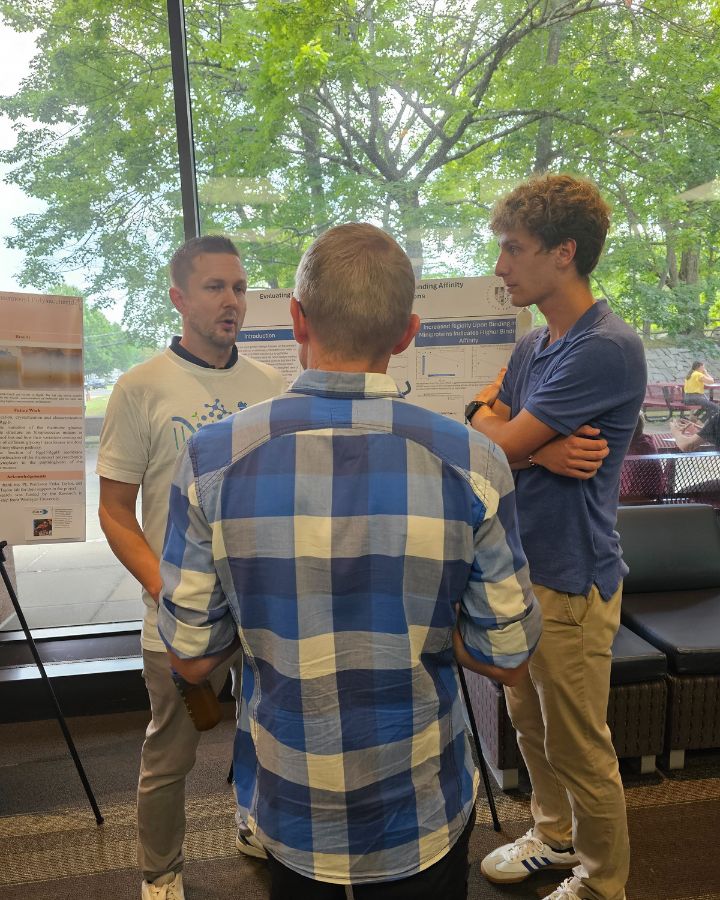
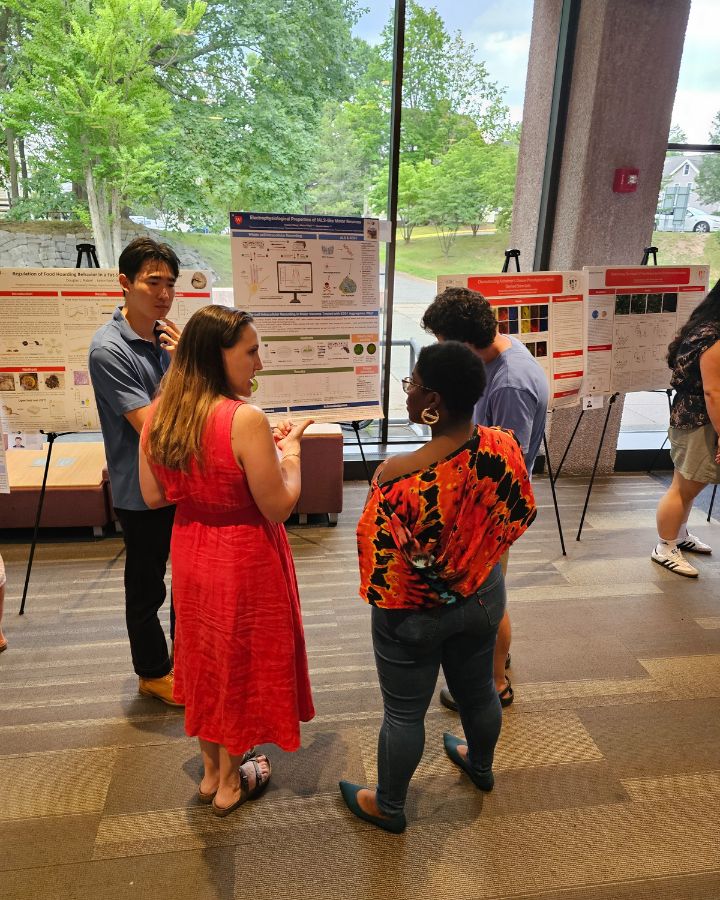
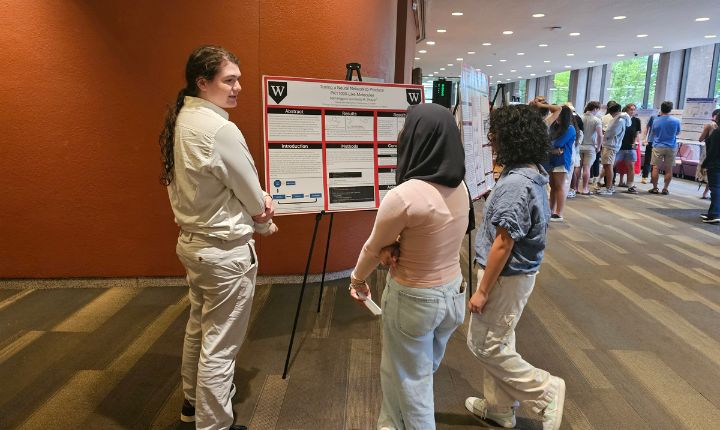
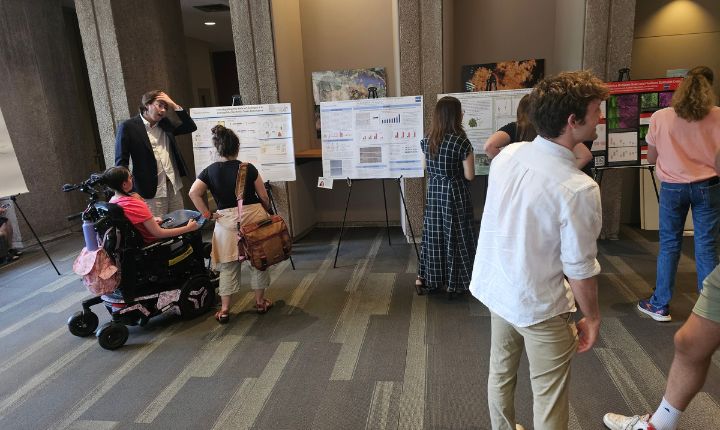
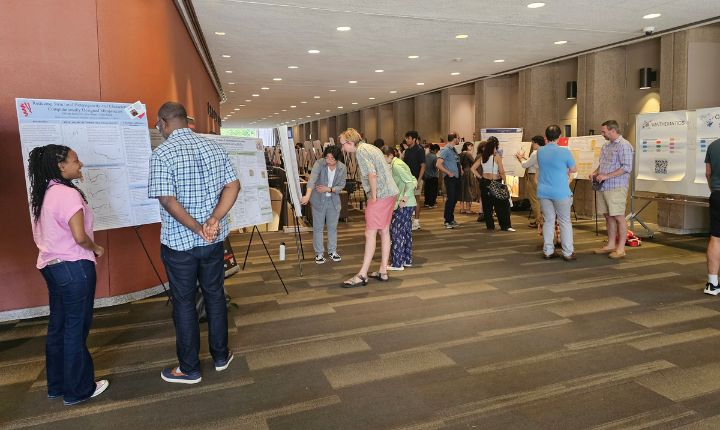
The 2025 Research in Science summer program was funded by:
- The College of Integrative Sciences
- The Bailey College of the Environment
- The Hazel Quantitative Analysis Center
- Wesleyan Math and Science Scholars
- Ronald E. McNair Post-Baccalaureate Achievement Program
- Wesleyan Summer Grant Program
- Wesleyan Grants in Support of Scholarship Internship Program
- Wesleyan Junior Fellow Program
- National Institutes of Health (NIH)
- National Science Foundation (NSF)
- NASA Connecticut Space Grant Consortium
- Norman Berry Endowment Fund
- Gomez Endowment Fund
- Hume Endowment Fund
- Silverberg Scholars
- Spencer Endowment Fund
- Tishler Endowment Fund
- Van Vleck Endowment Fund
- Wesleyan University

